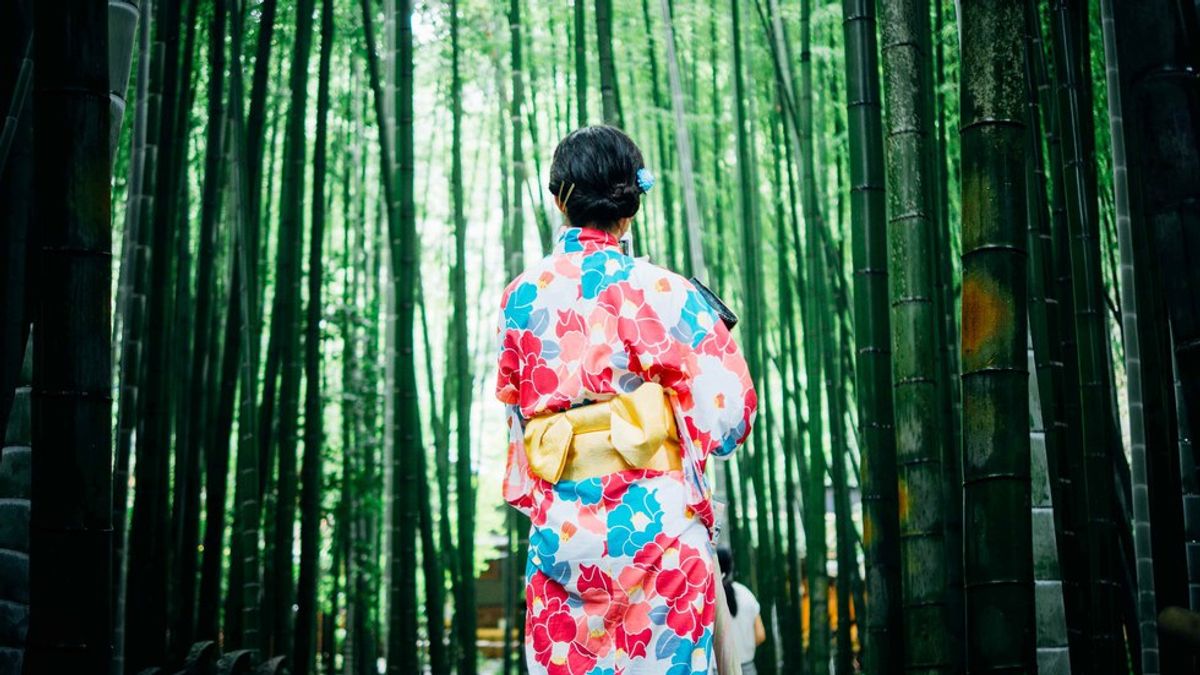It has been roughly six weeks since I have come to Japan for study abroad. It has been five weeks since I made the first step towards my financial downfall, and it has been a few days since my seemingly small step made a huge leap. Long story short, I bought a kimono. Now for those that don't know, like me five weeks ago, one does not just buy a kimono, they invest. I originally though I only needed the kimono and the obi (the tie around the stomach), the tabi (socks) and zori (shoes), and maybe a cute bag or head accessory. LIES! I thought that I would be able to find a yukata at a really good price since it's still winter. ALSO, LIES! I can't find them at all. I thought that I would only be spending about $50 or less on all of this. THE BIGGEST LIE! Now I knew that the nicer kimonos would cost more but I didn't realize the starting price was already so high. Plus there are all these parts I didn't know I needed, each with a higher starting price than I was willing to spend.
Let me break this down, in Japan, there are kimonos and yukatas. Yukatas are made of a thin material and don't require as many parts as a kimono. It is meant to be worn during the summer as casual wear. Kimonos, on the other hand, are more formal and will range for everyday wear to weddings. They can be worn all year around and require very specific parts which are used in a very specific way. The longer the sleeves, the more formal it is and the more parts it requires which means the more expensive the entire ensemble is. Of course, the nicer kimonos that I was originally looking for are all furisode, one of the most formal types an unmarried woman can wear; also really expensive. Your marriage status, event occasion, and sometimes even financial status can decide what type and color kimono you can wear. Did I forget to mention that there is something called kimono underwear; because that is apparently a thing that I didn't know about but need. Leading me to the conclusion that I somehow have fallen down the kimono black hole.
It all started two days after arriving in Japan. I went exploring with my friends where we found a department store called Izumia which happened to have a kimono sections. One of my dear friends is a kimono fanatic and of course, she was drawn to this sections of the store and after trying and choosing a kimono she ended up buying it. We spend hours there, refusing to try any on because we didn't have too much time. However they were having a deal that day which was if you let them dress you up, then you can buy one for $10. It was almost a steal for a brand new kimono! The next day we came back so that my other friends as I could buy one. A few weeks later I bought an obi for roughly $20 brand new at a second-hand shop in Osaka. Coincidentally I bought an obi that can be used for everyday kimono wear and yukatas; lucky I found a two-in-one! A few days after that I started to finish up by buying all of the smaller things like the string to tie up the kimono and the board used to keep the front of the obi flat.
Fast forward to a few days ago when my friends and I went a Plum Blossom festival in Kyoto which just so happens to also have a kimono flee market. They were having an amazing deal and I kind of went overboard, just a bit. The deal was that we could buy anything for the one price of $20 if we could fit it into a small bag about the size of a Walmart bag. Except for the fact that all of it was second hand and just piled on top of each other, that was a great deal. At the end of the day, I ended up walking away with two kimonos, three kimono jackets, kimono underwear (like an inner slip), and a more formal obi and obijime. I also found brand new zori for $20 where everywhere else had it for $50 plus. The prices were all great which is why some of my friends lost themselves and ended up spending way more money than needed because of the sweet deals. I'm glad I held myself back a bit but I have a feeling this is only the start of things.
It's been six weeks and I have already spent about $60 on just putting together one kimono ensemble. Yet I still need tabi, a bag, and hair accessories. Maybe after the seventh week I will finally be done buying everything and learn how to put all of this stuff on, or maybe I will have given up after my mother reads this article. Either way, if you are planning on coming to Japan, be cautious of if your willing to make the investment in kimonos. It's a long way down but you're welcome to fall down the kimono rabbit hole with me.
If you would like to learn more about types of kimonos: click here.
If you are brave enough to make the investment but wish to have a community to talk to, check out Immortal Geisha on Facebook.


















